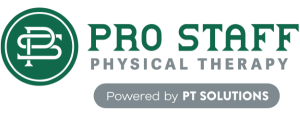Women’s Health in Physical Therapy

Did you know that women often face unique health challenges? Physical therapy offers women a holistic approach to fitness, focusing on exercises, manual therapy, and education to improve overall well-being. By addressing the root causes of these health conditions, physical therapists can help women regain control over their bodies and enhance their quality of life. Continue reading this article to discover how physical therapy can improve women’s health and manage specific conditions. Our experienced team of physical therapists is here to provide personalized care and support your journey toward better health and well-being.
Pelvic Floor Health
Pelvic floor health is critical to women’s well-being, and several common disorders can affect this area. Let’s explore three significant pelvic floor conditions and how physical therapy interventions can effectively manage and treat them:
- Urinary Incontinence: Urinary incontinence is the involuntary leakage of urine, which can significantly impact a woman’s daily life. There are different types of urinary incontinence, including stress incontinence (leakage during activities like coughing or laughing) and urge incontinence (sudden, intense urge followed by leakage).
Physical therapy can address urinary incontinence through pelvic floor muscle training. These exercises involve contracting and releasing the pelvic floor muscles, which can strengthen the muscles, providing better support for the bladder and preventing leakage.
- Pelvic Organ Prolapse: Pelvic organ prolapse occurs when the pelvic organs (such as the uterus, bladder, or rectum) descend or bulge into the vaginal canal due to weakened pelvic floor muscles. This can lead to discomfort, pressure, and urinary or bowel issues.
Physical therapy aims to manage pelvic organ prolapse through targeted exercises that strengthen the pelvic floor and surrounding muscles. Kegel exercises, in which the pelvic floor muscles are contracted and released for several seconds, can help strengthen these muscles and improve prolapse symptoms. Pelvic tilts, in which the pelvis is tilted forward and back while lying on the back, are also helpful in relieving pelvic prolapse symptoms.
- Pelvic Pain: Pelvic pain can have various causes, including musculoskeletal issues, nerve irritation, or underlying medical conditions. Conditions like endometriosis, interstitial cystitis, and pelvic floor muscle dysfunction can contribute to pelvic pain.
Physical therapy interventions for pelvic pain focus on relieving muscle tension, improving flexibility, and addressing any imbalances in the pelvic region. Techniques like manual therapy, trigger point release, and relaxation exercises can help alleviate pain and improve pelvic floor function.
Prenatal and Postpartum Care
According to a study published in the Journal of Obstetrics and Gynaecology Canada, up to 50% of pregnant women experience low back pain during pregnancy. Prenatal and postpartum care ensures a healthy and comfortable pregnancy journey and a smooth recovery after childbirth. Let’s explore ways to prevent musculoskeletal discomfort during and after pregnancy and how to facilitate safe exercise programs during this transformative time.
- Preventing Musculoskeletal Discomfort During Pregnancy: During pregnancy, the body undergoes significant changes to accommodate the growing baby. As a result, many women experience musculoskeletal discomfort, such as lower back pain, pelvic pain, and round ligament pain. Following are some tips to help prevent or alleviate these issues:
- Practice regular prenatal exercises that focus on strengthening core and pelvic floor muscles. This can help support the added weight and maintain better posture.
- Use proper body mechanics during daily activities to reduce strain on the back and pelvis.
- Maintain a healthy weight gain throughout pregnancy to lessen the burden on joints and muscles.
- Facilitating Safe Exercise Programs During Pregnancy: Exercise offers numerous benefits, including improved mood, better sleep, and increased stamina for labor. However, it’s essential to follow safe guidelines to protect both the mother and baby:
- Consult with a healthcare provider before starting any exercise program, mainly if specific medical concerns exist.
- Opt for low-impact activities like walking, swimming, or prenatal yoga, which are gentle on the joints.
- Avoid exercises that involve lying flat on the back after the first trimester, as this can reduce blood flow to the uterus.
Remember, each pregnancy is unique, so listening to your body and adjusting as needed is essential. Talk to our expert physical therapist team for personalized prenatal and postpartum care and safe exercise guidance. Our team is dedicated to supporting you throughout this unique journey.
Osteoporosis and Bone Health
Osteoporosis is characterized by decreased bone density and increased risk of fractures, commonly affecting older individuals, especially women. However, physical therapy allows individuals to manage this condition in the following ways:
- Exercise for Osteoporosis Management: Physical therapists design exercise programs tailored to individual needs, considering age, fitness level, and bone density. Weight-bearing exercises, which involve activities that support body weight on the feet and legs, are particularly beneficial for improving bone density. Examples include walking, jogging, dancing, and stair climbing. These activities stimulate bone formation, helping to counteract bone loss.
- Strength Training: Strength training, also known as resistance exercises, involves using weights or resistance bands to challenge muscles and bones. Muscles pulling on bones during these exercises stimulate bone remodeling, improving bone density. Engaging in strength training exercises for major muscle groups, such as squats, lunges, and bicep curls, can effectively manage osteoporosis.
- Balance Training: Osteoporosis can increase the risk of falls, leading to fractures. Physical therapy includes balance training to improve stability and reduce the likelihood of falls. These exercises challenge the body’s ability to maintain equilibrium, helping individuals regain confidence in their movements and reduce fall-related injuries.
- Fall Prevention Strategies: Physical therapists work with individuals to develop strategies that minimize fall risks. This may involve assessing the home environment for hazards, educating on fall prevention techniques, and teaching individuals how to safely recover from a potential fall.
The significance of weight-bearing exercises and strength training in improving bone density cannot be overstated. Physical therapy is crucial in managing osteoporosis by focusing on exercises, balance training, and fall prevention strategies. Weight-bearing exercises and strength training are essential for improving bone density and reducing the risk of fractures.
Menstrual and Pelvic Pain
Menstrual and pelvic pain can significantly impact a woman’s quality of life. Chronic pelvic pain, endometriosis, and other related conditions require comprehensive management to alleviate discomfort and improve overall well-being. Physical therapy can be crucial in addressing these issues through manual therapy, relaxation exercises, and pain management strategies.
- Chronic Pelvic Pain: Chronic pelvic pain refers to persistent discomfort in the pelvic region lasting for at least six months.
- Endometriosis: A common gynecological condition, occurs when tissue similar to the uterine lining grows outside the uterus, leading to pain and inflammation.
- Other Related Conditions: In addition to chronic pelvic pain and endometriosis, physical therapy can also address other related conditions such as:
- Interstitial Cystitis (IC): IC is a chronic bladder condition that causes pain and frequent urination. Pelvic floor physical therapy can help manage symptoms by addressing pelvic muscle dysfunction and reducing trigger points.
- Dysmenorrhea: Dysmenorrhea refers to painful menstrual cramps. Physical therapy can teach relaxation techniques, stretching exercises, and postural adjustments to ease discomfort during menstruation.
Physical therapists trained in women’s health can employ various techniques to address chronic pelvic pain and endometriosis, such as:
- Manual Therapy: Soft tissue mobilization and myofascial release can help reduce muscle tension and adhesions in the pelvic region, relieving pain and improving flexibility.
- Relaxation Exercises: Techniques such as diaphragmatic breathing and progressive muscle relaxation can help relax the pelvic floor muscles, reducing muscle spasms and pain.
- Pain Management Strategies: Physical therapists can work with individuals to develop personalized pain management plans, including heat or cold therapy, TENS (Transcutaneous Electrical Nerve Stimulation) application, and education on managing pain triggers.
Physical therapists collaborate with healthcare providers to provide comprehensive care for individuals experiencing menstrual and pelvic pain.
Why Choose Pro Staff for Physical Therapy Needs?
Choose Pro Staff for your physical therapy needs because we prioritize your well-being and provide exceptional care. Our team of highly skilled and experienced physical therapists is dedicated to addressing your specific concerns and creating personalized treatment plans to help you achieve your goals. With Pro Staff Physical Therapy, you can trust that you’re in capable hands, and we’ll support you every step of your journey to better health. For more information and to schedule your appointment.
Pro Staff Institute, LLC, has a network of outpatient physical rehabilitation centers in New Jersey. Pro Staff was founded in 2010 by Frank Pavlisko and Michael Maffucci. Through Frank’s 25 plus years experience in Physical Therapy and Michael’s experience in Management Services, our goal is to exceed customer expectations by providing the highest quality of service in a fun, family, friendly, and encouraging environment.
PRO STAFF LOCATIONS
OFFERING CERTIFIED
HAND THERAPY
Managing Diabetes: The Role of Physical Therapy
Managing Diabetes: The Role of Physical Therapy As of 2024, approximately 38.4 million Americans, or 11.6% of the U.S. population, have diabetes. Of these, 29.7 million cases are diagnosed, while an estimated 8.7 [...]
Staying Active and Injury-Free During Summer Activities
Staying Active and Injury-Free During Summer Activities Summer is a fantastic time to engage in outdoor sports and physical activities. Whether playing soccer, tennis, cycling, or jogging in the park, staying active is [...]
The Importance of Posture: How Proper Alignment Can Prevent Pain and Injury
The Importance of Posture: How Proper Alignment Can Prevent Pain and Injury In today's fast-paced world, where many hours are spent over desks, smartphones, and computers, posture is often neglected. Poor posture can [...]




